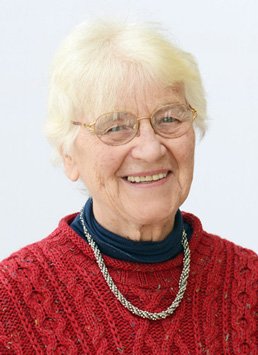Society for the Study of Women Philosophers, Inc.
a non-profit, tax-exempt educational charity 501(c)3 Internal Revenue Code
Anna Maria van Schurman
1607-1678
Feminism, Metaphysics,Logic
|
Kate Lindemann's Women Philosophers pages |
 |
Remember!! Your purchase of books by clicking on Abe Books or Amazon links through this site earns us a small commission that is used to provide travel scholarships. |
Anna Maria Van Schurman was a multi-talented woman who was accomplished as an artist, a linguist and as a philosopher. She remains a model for those drawn to more than one area of work.
Chronology
1607 Anna Maria Van Schuman is born in Cologne, Germany. Her mother was German and her father was Dutch. She was educated at home with her brothers by her father
1623 Her father dies.
1626 Anna Maria Van Schurman and her mother leave Germany and move to Ultrecht in the Netherlands.
1636 She is involved in the founding of the University of Utrecht. It should be noted that she was allowed to attend classes while sheltered from view by a thick curtain! (The University and its founding is discussed in her Opuscula published in 1648.)
1637 Anna Maria Van Schuman's mother dies and she now has full responsibility for the day to day care of two aging Aunts. This work took much of her time and energy. Around this time she began to think that she would no longer be able to publish.
1661 The Aunts die.
1669 Anna Maria leaves Utrecht to live with Jean Labadie and his followers. (Labadie was a French Reformed Church preacher whose ideas about theology and Church she agreed with. After Labadie's death Schurmann became increasingly important in this group of his followers.)
Anna Maria Van Schurman became part of a group who surrounded another Dutch theologian, G. Voetius.
She became a central figure in a group of women scholars. She wrote a number of theological works, was known for her knowledge of languages and kept up a large correspondence.
The Encyclopedia lists her as an artist who contributed to glass making. She was one of two women who "decorated their glasses with flowers and insects drawn with a gossamer touch, often accompanied by epigrams in Latin or Greek capitals" She also painted.
1678 The year of her death.
Works
1632 To ... Andre Rivet (Letter in, Whether a Christian woman Should Be Educated and Other Writings from her Intellectual Circle - trans. Joyce L. Irwin.)
1635 Letter to Andre Rivet
1637 To ... Andre Rivet
1638 To ... Andre Rivet
1638 The Learned Maid. A Logicall Exercise upon this Question, Whether a Maid May Be a Scholar
1639 De Vitae Humanae Termino
1639 Brief aan de Prinses van Bohemen, (To Madam the Princess of Bohemia) which begins "I cannot express the abundance of joy and happiness...." trans by Irwin, Joyce L. in, Whether a Christian Woman Should Be Educated and Other Writings from her Intellectual Circle.
1640 To Mademoiselle (Marie le Jars) de Gournay (in Whether a Christian Woman...)
1641 De Ingenii mulieribus ad doctrainam et meiores literreras aptitudine {English trans. The Learned Woman, or Whether a Maid May be a Scholar )
1641 To the Most Noble Lady Moor & another To Dorothy Moor (in Whether a Christian Woman.)..
1642 To Madam Anne de Merveil (in Whether a Christian Woman.)..
1643 To Princess Anne de Rohan (in Whether a Christian Woman...)
1644 To the Princess of Bohemia (in Whether a Christian Woman...)
1645 To ... Lady Bathsua Makin - 3 letters - (in Whether a Christian Woman...)
1646 To Mademoiselle du Moulin and another To ... Bathsua Makin (in Whether a Christian Woman )
1648 Opuscula Hebraea, Graeca, Latina, Gallica, prosaica et metrica. It should be noted that Anna Maria Van Schurman wrote this work in Hebrew, Greek, Latin and French. This book that was republished several times - the last publication in 1749. There is a German site with the text at: http://www.uni-mannheim.de/mateo/desbillons/opus.html
1673–85. Euclera seu melioris partis electio (autobiography, 2 vols)
1699 Mysterium magnum
Mary Ellen Waithe reports in her History of Women Philosophers, Volume 3 that Anna Maria Van Schurman authored An Ethiopian Grammar.
You will find the texts of her works in Dutch at Anna Maria Van Schurman It should also be noted that she wrote in languages seldom read by her contemporaries and so these works have not been translated.
She also did calligraphy and this piece shows her ability with Hebrew, Arabic, Aramaic, Persian, and Syrian , Calligraphy
Note: I am especially indebted to the information at the site called, Other Women's Voices
This page was updated January 10, 2015.
Society for the Study of Women Philosophers